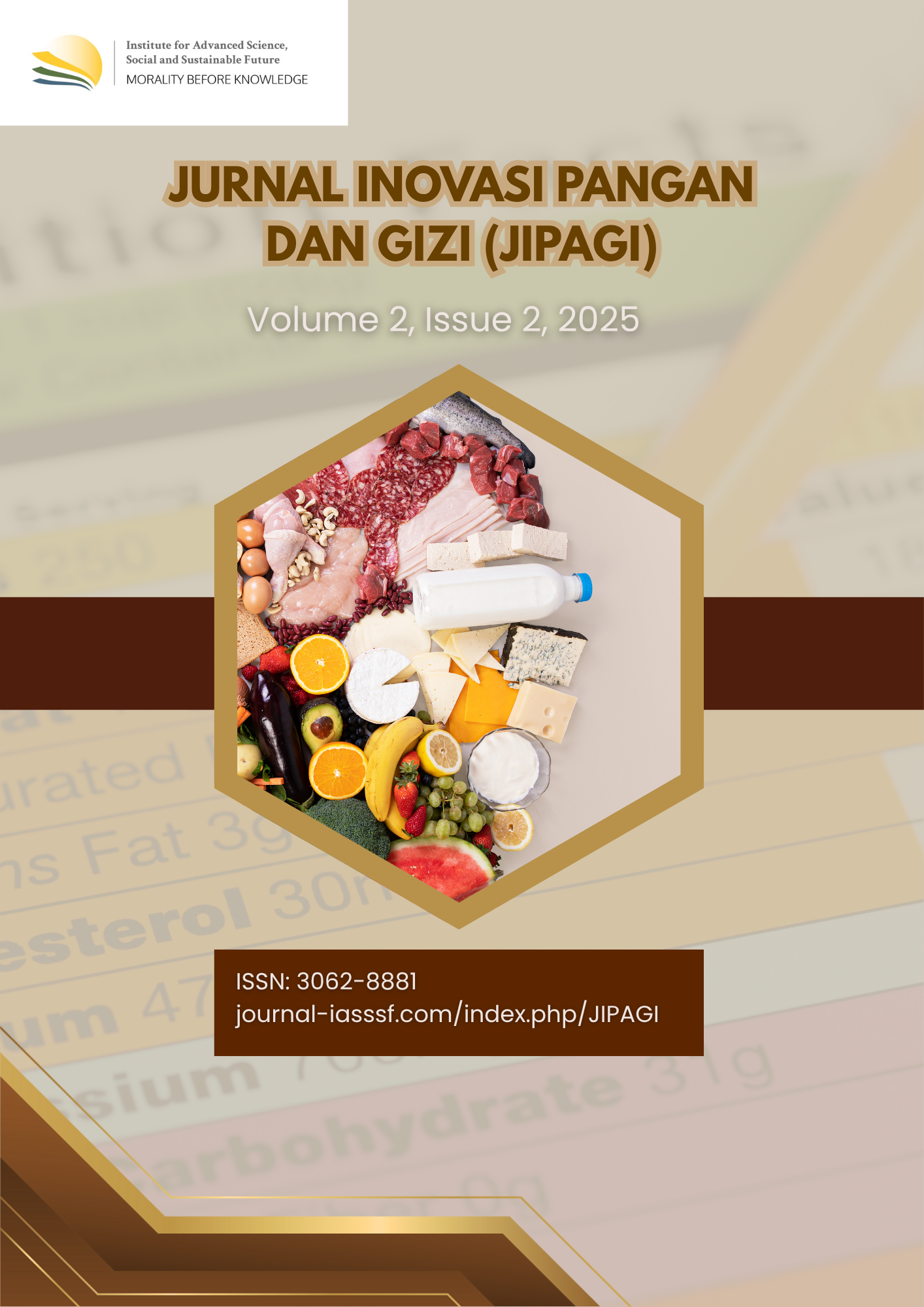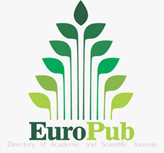Bioactive proteins in breast milk and their impact on infant gut development
DOI:
https://doi.org/10.61511/jipagi.v2i2.2147Keywords:
bioactive proteins, breast milk, infant gastrointestinal tract, mucosal immunity, neonatal microbiotaAbstract
Background: During early stages of life, breast milk is the mainstay of nutrition. Beyond delivering vital amino acids, certain proteins like lactoferrin, α-lactalbumin, sIgA, and lysozyme bolster the infant's gastrointestinal system and provide protective mucosal factors alongside immunomodulatory functions, helping shape the gut microbiome. The goal of this review is to analyze the scientific literature on the types and composition of proteins in breast milk, their biological functions, and their effects regarding the development and protection of the infant’s gastrointestinal tract with special focus on the mechanisms of mucosal immunity, mucosal defense, and microbial colonization. Methods: A literature search was conducted through PubMed, and Google Scholar databases with the terms bioactive, breastmilk, gut, infant, and microbiota. Only articles published between 2015 and 2025 were chosen for their relevance to the topic and methodological soundness. Findings: Whey proteins, which dominate the early lactation phase, contain bioactive peptides that are easily absorbed and support enterocyte maturation. Lactoferrin and sIgA contribute to maintaining mucosal integrity and preventing pathogen colonization. Growth factors such as epidermal growth factor (EGF) and transforming growth factor-beta (TGF-β) accelerate epithelial maturation and strengthen tight junctions, while other proteins like osteopontin and beta-casein help shape a favorable microbial ecosystem. Conclusion: Breast milk proteins contribute multifaceted roles in gastrointestinal and immune system development, underscoring the importance of exclusive breastfeeding as a foundation for neonatal gastrointestinal and immunological health. Novelty/Originality of this article: This review provides a comprehensive synthesis of the diverse roles of breast milk proteins in shaping infant gastrointestinal development and mucosal immunity by emphasizing perspectives that integrate evidence focused on nutrition, immunology, and the microbiome in a way that has not been fully addressed in previous literature.
References
Afdhal, M., Sulaiman, M. I., Yunita, D., & Sulaiman, I. (2025). The production of leaf bokashi in pilot scale to support zero waste initiative of Universitas Syiah Kuala (USK), Indonesia. Case Studies in Chemical and Environmental Engineering, 11, 101045. https://doi.org/10.1016/j.cscee.2024.101045
Aksan, A., Erdal, I., Yalcin, S. S., Stein, J., & Samur, G. (2021). Osteopontin levels in human milk are related to maternal nutrition and infant health and growth. Nutrients, 13(8), 2670. https://doi.org/10.3390/nu13082670
Aquino-Domínguez, A. S., Romero-Tlalolini, M. D. L. Á., Torres-Aguilar, H., Rodríguez-Alba, J. C., Martínez-Martínez, L. L., Sánchez-Peña, F. J., ... & Aguilar-Ruiz, S. R. (2025). Bactericidal/permeability-increasing protein (BPI), a novel antimicrobial molecule in human breast milk with immune potential. Microorganisms, 13(1), 115. https://doi.org/10.3390/microorganisms13010115
Arenas, G., Barrera, M. J., & Contreras-Duarte, S. (2025). The impact of maternal chronic inflammatory conditions on breast milk composition: Possible influence on offspring metabolic programming. Nutrients, 17(3), 387. https://doi.org/10.3390/nu17030387
Ceroni, C., Dayon, L., Van den Abbeele, P., Roch, A., Dervaux, J., Ernest, M., ... & Mashinchian, O. (2025). Lactoferrin-osteopontin complexes: Insights into intestinal organoid bioavailability and gut microbiota modulation. Communications Biology, 8(1), 1017. https://doi.org/10.1038/s42003-025-08460-7
Cheng, W. D., Wold, K. J., Benzoni, N. S., Thakwalakwa, C., Maleta, K. M., Manary, M. J., & Trehan, I. (2017). Lactoferrin and lysozyme to reduce environmental enteric dysfunction and stunting in Malawian children: Study protocol for a randomized controlled trial. Trials, 18(1), 523. https://doi.org/10.1186/s13063-017-2278-8
Davis, A., & Perrin, M. (2023). Changes in Human Milk Composition After Pasteurization in a Milk Bank Setting: Preliminary Findings from the Global Donor Human Milk Study. Journal of the Academy of Nutrition and Dietetics, 123(10), 30-43. https://doi.org/10.1016/j.jand.2023.08.081
Dawod, B., Marshall, J. S., & Azad, M. B. (2021). Breastfeeding and the developmental origins of mucosal immunity: How human milk shapes the innate and adaptive mucosal immune systems. Current Opinion in Gastroenterology, 37(6), 547-556. https://doi.org/10.1097/MOG.0000000000000778
Donald, K. (2025). The role of breastmilk IgA in infant gut microbiota and immune development. University of British Columbia. https://open.library.ubc.ca/collections/ubctheses/24/items/1.0448303
Enjapoori, A. K., Kukuljan, S., Dwyer, K. M., & Sharp, J. A. (2019). In vivo endogenous proteolysis yielding beta-casein derived bioactive beta-casomorphin peptides in human breast milk for infant nutrition. Nutrition, 57, 259–267. https://doi.org/10.1016/j.nut.2018.05.011
Grases-Pintó, B., Torres-Castro, P., Abril-Gil, M., Castell, M., Rodríguez-Lagunas, M. J., Pérez‑ Cano, F. J., & Franch, À. (2024). TGF-β2, EGF and FGF21 influence the suckling rat intestinal maturation. The Journal of Nutritional Biochemistry, 109778. https://doi.org/10.1016/j.jnutbio.2024.109778
Hård, A. L., Nilsson, A. K., Lund, A. M., Hansen-Pupp, I., Smith, L. E. H., Hellström, A. (2019). Review shows that donor milk does not promote the growth and development of preterm infants as well as maternal milk. Acta Paediatric, 108(6):998-1007. https://doi.org/10.1111/apa.14702
Hermawati, L., Irawati, N. B. U., & Zulfa, H. A. (2025a). Impact of maternal knowledge, socioeconomic factors, social support, and policies on exclusive breastfeeding: A comprehensive literature review. International Journal of Medicine and Public Health, 2(2), 1–8. https://jurnal.untirta.ac.id/index.php/inomed/article/view/32063
Hermawati, L., Wulansari, E. R., Irawati, N. B. U., Zulfa, H. A., Tsaqifah, N. A., & Hidayati, M. D. (2025b). Penguatan peran posyandu dalam promosi kesehatan untuk mencegah stunting, kampung kopo desa citeluk banten. JANNAH Jurnal Pengabdian kepada Masyarakat, 1(3), 243-249. https://doi.org/10.63401/jannah.v1i03
Holgersen, K., Muk, T., Ghisari, M., Arora, P., Kvistgaard, A. S., Nielsen, S. D.-H., ... & Bering, S. B. (2024). Neonatal gut and immune responses to β-casein enriched formula in piglets. The Journal of Nutrition, 154(7), 2143–2156. https://doi.org/10.1016/j.tjnut.2024.04.036
Jiang, R., Du, X., & Lönnerdal, B. (2024). Effects of forming lactoferrin-milk protein complexes on lactoferrin functionality and intestinal development in infancy. Nutrients, 16(23), 4077. https://doi.org/10.3390/nu16234077
Jiang, R., Prell, C., & Lönnerdal, B. (2023). Milk osteopontin promotes intestinal development by up-regulating the expression of integrin αvβ3 and CD44. The FASEB Journal, 37(1), e300092R. https://doi.org/10.1096/fj.202300092R
Koh, J., Victor, A. F., Howell, M. L., Yeo, J. G., Qu, Y., Selover, B., ... & Dallas, D. C. (2020). Bile salt-stimulated lipase activity in donor breast milk influenced by pasteurization techniques. Frontiers in Nutrition, 7, 552362. https://doi.org/10.3389/fnut.2020.552362
Kulesza-Brończyk, B., Bień, A., Sobieraj, P., Orczyk-Pawiłowicz, M., Lis-Kuberka, J., Czosnykowska-Łukacka, M., & Bzikowska-Jura, A. (2023). Factors affecting total protein and lactoferrin in human milk. Scientific Reports, 13(1), 22434. https://doi.org/10.1038/s41598-023-50124-1
Layman, D. K., Lönnerdal, B., & Fernstrom, J. D. (2018). Applications for α-lactalbumin in human nutrition. Nutrition Reviews, 76(6), 444–460. https://doi.org/10.1093/nutrit/nuy004
Le Bras, C., Randuineau, G., Cahu, A., Dahirel, P., Guérin, S., Janvier, R., Romé, V., Rault, L., Maillard, M.-B., Bellanger, A., Le Loir, Y., Blat, S., Even, S., & Le Huërou-Luron, I. (2025). Human milk bacteria assembled into functionally distinct synthetic communities in infant formula differently affect intestinal physiology and microbiota in neonatal mini-piglets. bioRxiv. https://doi.org/10.1101/2025.01.21.634066
Liang, D., Jiang, Z., Zhang, Y., Li, N., Jiang, H., & Ding, G. (2024). Maternal BMI During Lactation Is Associated with Major Protein Compositions in Early Mature Milk. Nutrients, 16(22), 3811. https://doi.org/10.3390/nu16223811
Mahdally, S. M., Izquierdo, M., Viscardi, R. M., Magder, L. S., Crowley, H. M., Bafford, A. C., ... & Salerno-Goncalves, R. (2023). Secretory-IgA binding to intestinal microbiota attenuates inflammatory reactions as the intestinal barrier of preterm infants matures. Clinical and Experimental Immunology, 213(3), 339–356. https://doi.org/10.1093/cei/uxad042
Manzoni, P., Militello, M. A., Rizzollo, S., Tavella, E., Messina, A., Pieretto, M., ... & Tarnow- Mordi, W. (2019). Is lactoferrin more effective in reducing late-onset sepsis in preterm neonates fed formula than in those receiving mother's own milk? Secondary analyses of two multicenter randomized controlled trials. American journal of perinatology, 36(S 02), S120-S125. https://doi.org/10.1055/s-0039-1691807
McClanahan, K. G., Capella, J. C., Gaddy, J. A., & Olivares-Villagómez, D. (2025). The effects of breastmilk-derived osteopontin on the intestinal intraepithelial lymphocyte compartment: Milk osteopontin and IEL development. bioRxiv, 1(29), 656804. https://doi.org/10.1101/2025.05.29.656804
Menglu, X., Dong, L., Yalu, Y., Sufang, D., Houxi, L., Haibing, Y., ... & Ai, Z. (2023). Functional proteins in breast milk and their correlation with the development of the infant gut microbiota: A study of mother-infant pairs. Frontiers in Microbiology, 14, 1239501. https://doi.org/10.3389/fmicb.2023.1239501
Miller E. M. (2024). Maternal characteristics are associated with human milk anti- inflammatory proteins in two populations. Scientific Reports, 14(1), 30941. https://doi.org/10.1038/s41598-024-81806-z
Minami, J., Odamaki, T., Hashikura, N., Abe, F., & Xiao, J. Z. (2016). Lysozyme in breast milk is a selection factor for bifidobacterial colonisation in the infant intestine. Beneficial Microbes, 7(1), 53–60. https://doi.org/10.3920/BM2015.0041
Mołas, A., Lis-Kuberka, J., Bzikowska-Jura, A., Wesołowska, A., Jin, T., Socha, M. W., & Orczyk- Pawiłowicz, M. (2025). Lactoferrin and SIgA concentrations in human milk of SARS- CoV-infected mothers—Polish cohort study. Nutrients, 17(11), 1840. https://doi.org/10.3390/nu17111840
Nagel, E. M., Elgersma, K. M., Gallagher, T. T., Johnson, K. E., Demerath, E., & Gale, C. A. (2023). Importance of human milk for infants in the clinical setting: Updates and mechanistic links. Nutrition in Clinical Practice, 38(2), S39–S55. https://doi.org/10.1002/ncp.11037
Noel, G., In, J. G., Lemme-Dumit, J. M., DeVine, L. R., Cole, R. N., Guerrerio, A. L., Campbell, J. D., Kovbasnjuk, O., Pasetti, M. F. (2021). Human Breast Milk Enhances Intestinal Mucosal Barrier Function and Innate Immunity in a Healthy Pediatric Human Enteroid Model. Frontier Cell Development Biology, 13, 9:685171. https://doi.org/10.3389/fcell.2021.685171
Nolan, L. S., Parks, O. B., & Good, M. (2019). A review of the immunomodulating components of maternal breast milk and protection against necrotizing enterocolitis. Nutrients, 12(1), 14. https://doi.org/10.3390/nu12010014
Page, M. J., McKenzie, J. E., Bossuyt, P. M., Boutron, I., Hoffmann, T. C., Mulrow, C. D., ... & Moher, D. (2021). The PRISMA 2020 statement: an updated guideline for reporting systematic reviews. BMJ, 372, n71. https://www.bmj.com/content/372/bmj.n71.short
Ponchon, P., Goulding, D. A., Kennedy, E., Giuffrida, F., Ambühl, M., Morgenegg, C., Oliveira, M., O’Regan, J., & Lewis, L. (2024). Application of a whey protein ingredient for simultaneous co-enrichment of infant formula with α-lactalbumin and milk fat globule membrane. International Dairy Journal, 152(1), 105877. https://doi.org/10.1016/j.idairyj.2023.105877
Quitadamo, P. A., Comegna, L., & Cristalli, P. (2021). Anti-infective, anti-inflammatory, and immunomodulatory properties of breast milk factors for the protection of infants in the pandemic from COVID-19. Frontiers in Public Health, 8, 589736. https://doi.org/10.3389/fpubh.2020.589736
Rio-Aige, K., Azagra-Boronat, I., Castell, M., Selma-Royo, M., Collado, M. C., Rodríguez- Lagunas, M. J., & Pérez-Cano, F. J. (2021). The breast milk immunoglobulinome. Nutrients, 13(6), 1810. https://doi.org/10.3390/nu13061810
Salsabila, L. (2025). Hubungan pengetahuan mengenai menyusui dan tingkat pendidikan ibu dengan pemberian ASI eksklusif di Posyandu Desa Bojonegara. Universitas Sultan Ageng Tirtayasa.
Sari, R. N., Jing, L., & Jiaping, L. (2023). The change of bile salt stimulated lipase during 6 months and the correlation with macronutrients in Chinese human milk. Canrea Journal: Food Technology, Nutritions, and Culinary Journal, 6(2), 119–128. https://doi.org/10.20956/canrea.v6i2.1033
Semënova, E., Simonenko, E., & Manuilov, B. (2022). Structure and properties of α- lactalbumin in mare’s milk. Food Processing Industry, 22–24. https://doi.org/10.52653/PPI.2022.11.11.005
Sindi, A. S., Stinson, L. F., Lai, C. T., Gridneva, Z., Leghi, G. E., Netting, M. J., ... & Geddes, D. T. (2025). Human milk lactoferrin and lysozyme concentrations vary in response to a dietary intervention. The Journal of Nutritional Biochemistry, 135, 109760. https://doi.org/10.1016/j.jnutbio.2024.109760
Slater, A., Hickey, R. M., & Davey, G. P. (2025). Interactions of human milk oligosaccharides with the immune system. Frontiers in Immunology. https://doi.org/10.3389/fimmu.2024.1523829
Sørensen, E. S., & Christensen, B. (2023). Milk osteopontin and human health. Nutrients, 15(11), 2423. https://doi.org/10.3390/nu15112423
Syahniar, R., & Suri, A. A. (2020). Profil mikrobiota ASI dan perannya terhadap saluran cerna bayi. Muhammadiyah Journal of Nutrition and Food Science (MJNF), 1(1), 8–17. https://doi.org/10.24853/mjnf.1.1.8-17
Torres-Castro, P., Grases-Pintó, B., Abril-Gil, M., Castell, M., Rodríguez-Lagunas, M. J., Pérez- Cano, F. J., & Franch, À. (2020). Modulation of the systemic immune response in suckling rats by breast milk TGF-β2, EGF and FGF21 supplementation. Nutrients, 12(6), 1888. https://doi.org/10.3390/nu12061888
Zulfa, H. A., Adhayati, B., Prameswari, Y. N., Amelia, R., Irawati, N. B. U., & Hermawati, L. (2025). Asi sebagai intervensi kesehatan ibu dan anak. Journal Of Baja Health Science, 5(02), 235-248. https://doi.org/10.47080/gh2m9936
Downloads
Published
How to Cite
Issue
Section
Citation Check
License
Copyright (c) 2025 Luluk Hermawati, Nur Bebi Ulfah Irawati, Hilizza Awalina Zulfa, Amanah Eva Fidusia, Erika Agustianti, Firda Asma’ul Husna

This work is licensed under a Creative Commons Attribution 4.0 International License.















